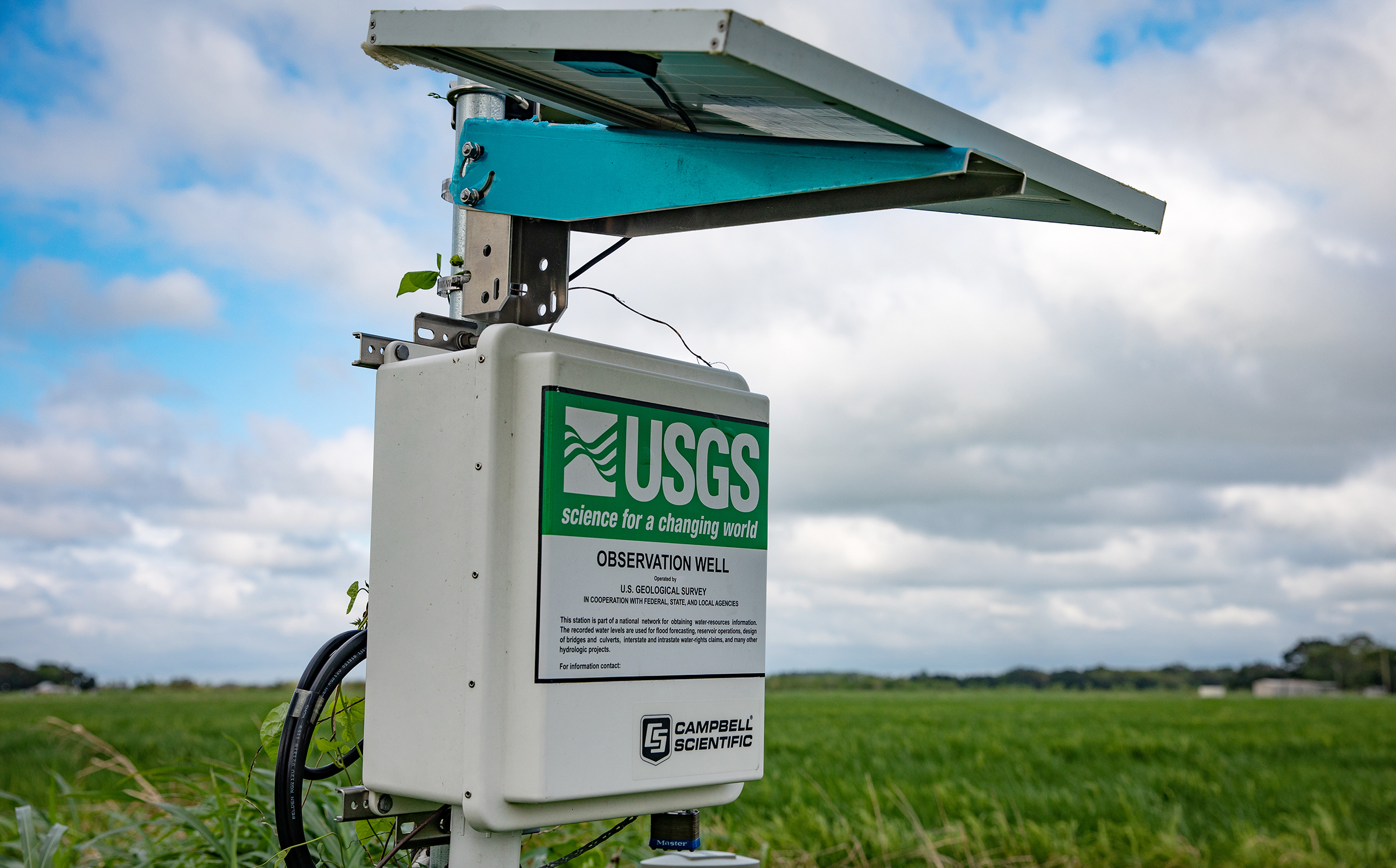The Investigative Reporting Workshop and WWNO/WRKF analyzed U.S. Geological Survey Groundwater Data for Louisiana to determine the extent to which water levels have declined over time in the state’s public and private wells. Along with USGS data scientists, reporters created a subset of the state’s roughly 31,000 well sites they called Louisiana’s Active Groundwater Monitoring Network. Wells included in the network were classified as active by the USGS and had recorded at least one measurement within the last three years.
Using a standard programming language for relational databases, reporters organized individual well measurements by date and calculated annual differences and net averages by well, aquifer and region. Average changes in feet-below-land-surface were plotted using open-source mapping software. Measures of total groundwater position were calculated both by determining average net change and eliminating outlier data.
The IRW and WWNO/WRKF used USGS National Water-Use Science Project and U.S. Census data to compile a database of per-capita and per-square-mile groundwater use in all 50 states, the District of Columbia and each parish in Louisiana. Local groundwater use is estimated every five years in the U.S., so reporters input more than 10 years of estimated data to model averages in each state and in Louisiana’s Carrizo-Wilcox, Catahoula, Cockfield, Evangeline, Mississippi River Alluvial, Red River Alluvial, Sparta and Upland Terrace aquifers and Chicot, Jasper and Southern Hills aquifer systems.
To measure industrial and agricultural influence on the Louisiana Legislature’s House Natural Resources and Environment Committee and Senate Environmental Quality Committee, the IRW and WWNO/WRKF manually examined financial disclosure reports for each of the committees’ 25 members and compiled five years worth of campaign finance disclosures from the Louisiana Ethics Administration Program.
Using spreadsheet software, reporters scraped 18,000 individual campaign contributions for keywords associated with oil and gas companies, chemical producers, major agricultural operations and all of their related political action committees or trade organizations and cross-referenced contributions with corresponding individual or lobbying disclosures.





